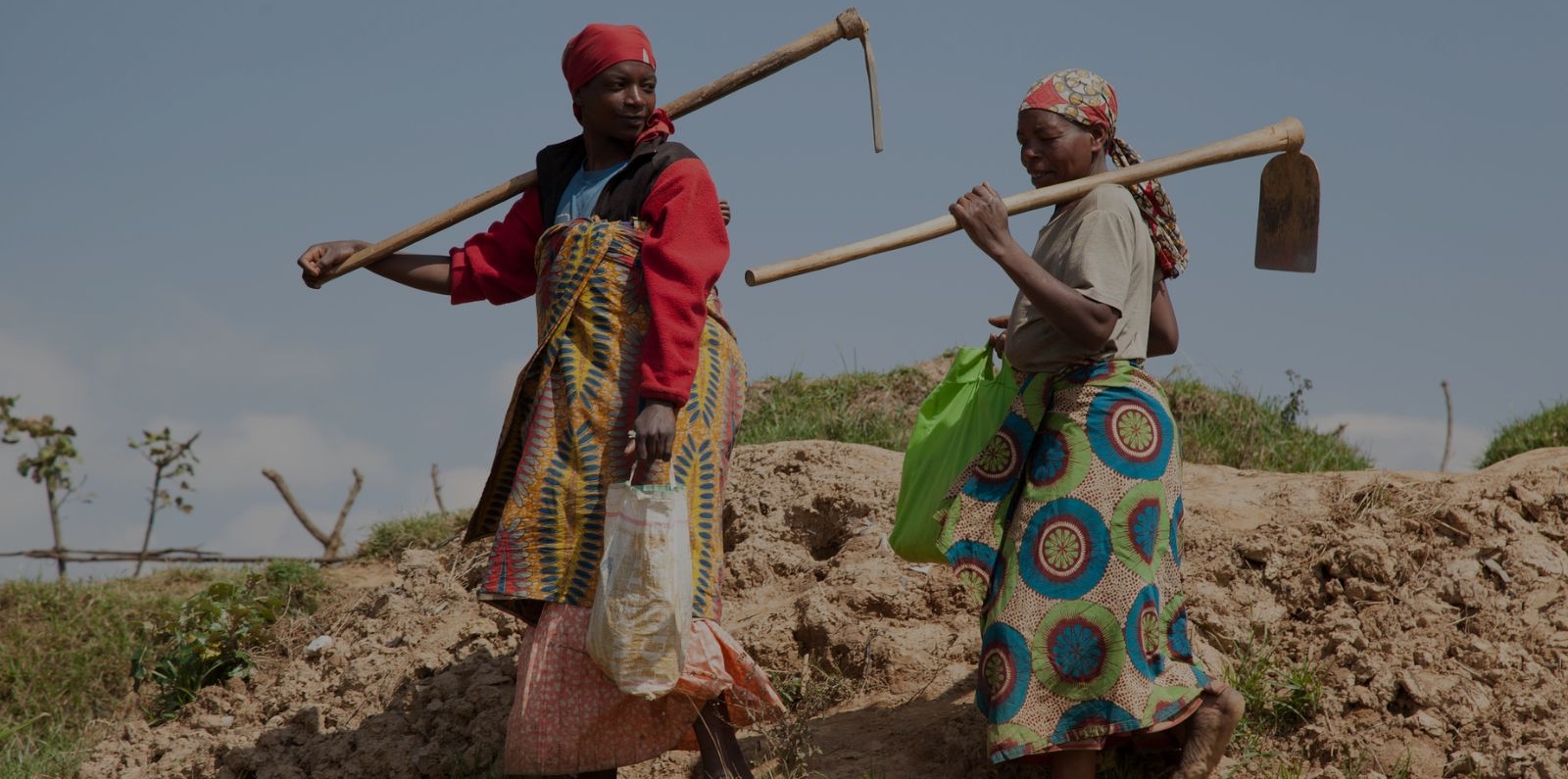About the Project
In Rwanda, the agriculture sector is steadily growing at 5.8% per year, accounting for about 33% of the GDP, employing 80% of the population, and providing most of the country’s food needs. Rwanda is a hilly country, with steep terrains and the highest population density in sub-Saharan Africa, subjecting the land to severe soil erosion and low productivity. Arable land on hillsides makes up the vast majority of the total agricultural land in the country, but erosion costs the country 1.4 million tons of fertile soil per year. Given poor water management and high dependence on rain-fed agriculture, irrigation is critical to reducing the sector’s vulnerability to climatic variation and to aligning the right incentives for intensification.
This two-phase flagship program in the Government of Rwanda's overall poverty reduction and agricultural strategy, supported by GAFSP, IDA, USAID, and the Canadian Department of Foreign Affairs, Trade, and Development, was designed to address key constraints to agricultural growth, including the needs for larger-scale watershed and community-based infrastructure approaches and for strong farmer mobilization. LWH built stronger farmer institutions and provided extension education, rural finance, and marketing support alongside physical investments. It used a modified watershed approach to introduce sustainable land husbandry measures for hillside agriculture and to develop hillside irrigation on select sites.
Country
- Rwanda
Project Status
ClosedFunding
Country-led projectSupervising entity
- World Bank
Call Year
2010GAFSP Funding Amount
50.00Project Highlights

farmers benefited from the project

of beneficiaries were using formal financial services

hectares of land irrigated
Results
At the end of the project, the World Bank rated LWH as “satisfactory.” LWH benefitted more than 280,000 farmers over five years, about one-half women. The project successfully achieved its two main objectives of increasing both productivity and the commercialization rate. Productivity on irrigated lands (as measured by dollar amount of farm products sold per hectare of farmland) rose from a baseline figure of US$492 in 2009 to US$2,575 by mid-2016. The share of farm products commercialized (as opposed to consumed locally) more than doubled from 35 percent to 76 percent. To achieve this outcome, the project disseminated improved technologies to farmers that addressed issues such as erosion control, productivity enhancement, and soil fertility. Before the project, less than 30 percent of farmers in the project area reported using these technologies. By mid-2016, almost all farmers were using some of these technologies. Further, the project irrigated 1,356 hectares of land, protected about 88 percent of hilly land areas against soil erosion, and reduced the volume of sediment yield or soil washed down from hilly slopes during heavy rain in project areas by 89 percent.
LWH also increased access to various formal financial products, such as committed savings accounts, and by mid-2016, about 80 percent of beneficiaries were using formal financial services, up from a baseline of about 20 percent. The project strengthened farmers’ organizations to effectively support farmers in their transition to move to higher value chain activities, helping to form and strengthen 2,624 self-help groups comprised of 15–25 farmer members each. Finally, the project improved the composition of peoples’ diets and thus their nutritional status by carrying out nutrition awareness training and constructing 47,611 kitchen gardens. As a result, by mid-2016, approximately 83 percent of households were consuming an acceptable diet, including food from various food groups.
Lessons Learned
Among the project’s lessons learned, flexibility in landscape approaches is important. The project proved that site-specific conditions were critical for determining what type of land husbandry package to apply. The initial model of implementing all three components of land husbandry, water harvesting dams, and hillside irrigation did not meet all sites’ needs. Flexibility had to be introduced to ensure cost-effectiveness and technical soundness. Next, the involvement of local leaders, such as village and Grievance Redress Committee leaders, was key to resolving conflicts over plots between neighbors, between land owners and the owners of assets on that land, and within families over asset ownership or social issues, such as the proper management/ use of compensation funds received by some displaced people.
Contact
GAFSP Coordination Unit
gafsp-info@gafspfund.org
